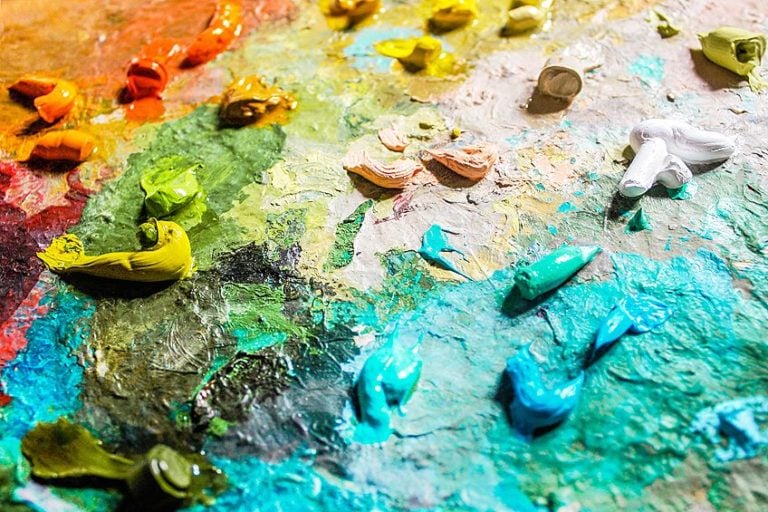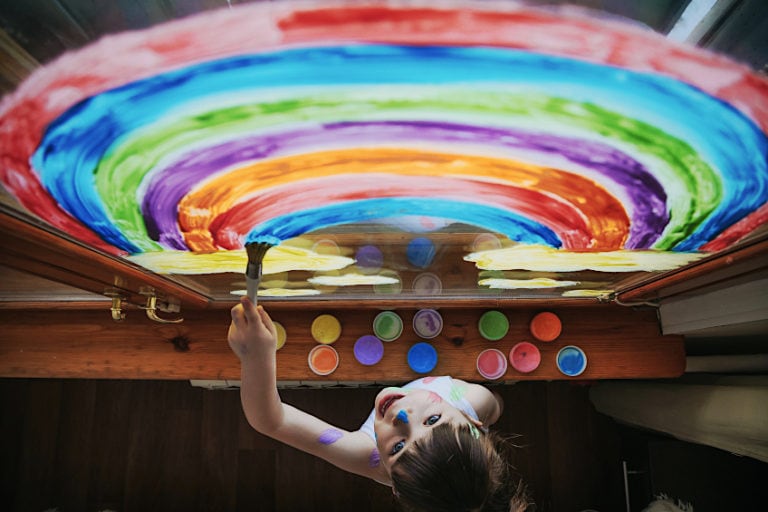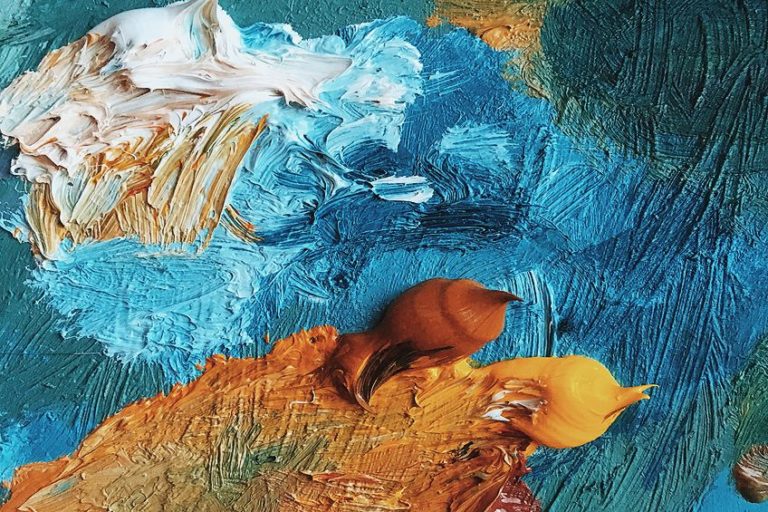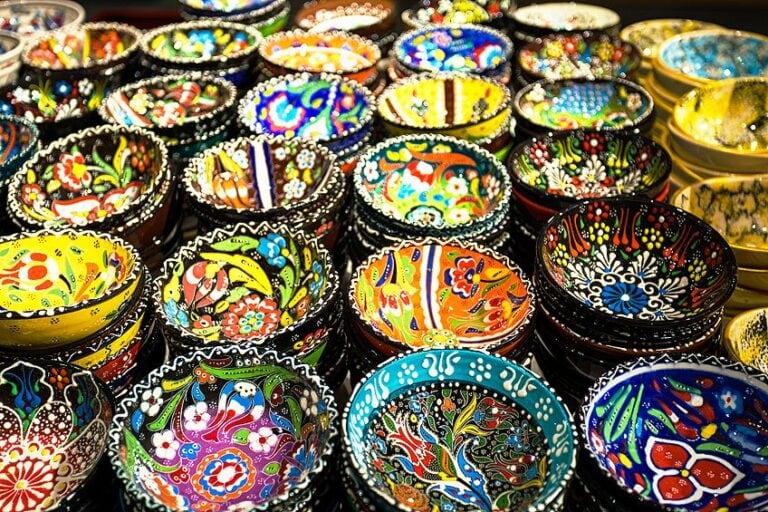What Is Calligraphy? – Guide to the Art of Beautiful Handwriting
This post may contain affiliate links. We may earn a small commission from purchases made through them, at no additional cost to you.
What is calligraphy, and how is calligraphy used as an art form? The art of calligraphy dates back many centuries ago with the development of writing systems and the design of lettering, which became its own art form. Practiced in a variety of traditions, the art of calligraphy is often described as the art of giving beauty to the form of words and alphabets, such that they form unique and harmonious inscriptions. In this article, we will introduce you to all you need to know about the art form of calligraphy, including its history, the different calligraphy styles, and a few key tips for beginners when learning the art form. Read on for more about this dynamic and expressive art form!
Table of Contents
An Introduction to Calligraphy
What is calligraphy, and what are the famous types of calligraphy? The history of calligraphy is rooted in the art of handwriting and describes the art of creating beautiful lettering that promotes harmony and expression. Calligraphy is practiced across multiple cultures and traditions, including Eastern and Western cultures.
The term “calligraphy” was derived from the Greek words “graphein” (to write) and “kallos” (beautiful), which signified a thorough knowledge of the pure form of letters.
The letters of the alphabet are incredibly important to the understanding of language itself, and as such, are a tool for communication. However, the art of calligraphy draws from lettering techniques and unique artistic styles to highlight the visual beauty of lettering itself and is not required to be legible or fully understood.
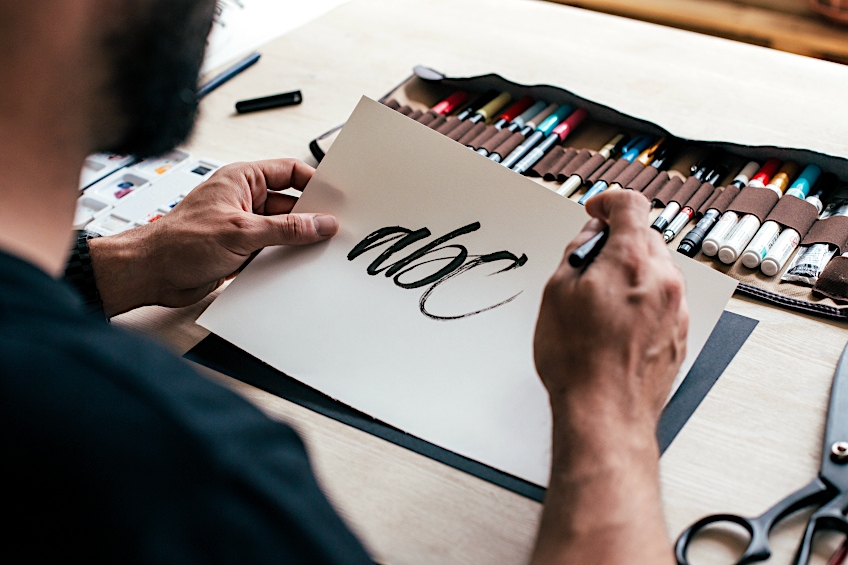
In regions such as Asia and the Middle East, calligraphy is a widely accepted art form that is respected along the same level as that of art forms like sculpture or painting. For centuries, calligraphy became a form of literary expression that was used to convey the style of the artist, identify the artist, and serve as an embellishment.
In English, the term “calligraphy” did not appear in the records until the early 17th century.
While many assume that the advent of printing technologies halted the production of calligraphic works, it has still been practiced by many calligraphers who sought to preserve the traditional lettering styles of the past. What are the different calligraphy styles, and how is calligraphy used as an art form? These are just a few questions we will unpack to understand the different types of calligraphy and its function in the Contemporary world.
Exploring the History and Evolution of Calligraphy
The history of calligraphy can be traced back to the ancient Mesopotamian cultures of 3000 BCE, who invented the cuneiform script. Cuneiform was a type of script often found on clay and stone tablets. The 2nd millennium BCE saw the development of calligraphy in the East Mediterranean Semitic societies.
Between the years 1000 and 1500 BCE, many sites existed that displayed consistency in form among the alphabetic signs found scratched on stones. Only a few of these fragmentary remains are recognized as written purely for their aesthetic visual value.
In 1905, another discovery led to a set of inscriptions located at the Sinai Peninsula. These inscriptions were translated to the word for “gift” found on a sphinx and the word “nun”, which translated to “serpent”. In the Eastern Mediterranean, several Semitic cultures spoke similar languages and used the same alphabets. Cultures such as the Hebrews, Aramaeans, and Phoenicians were pivotal in the development of the alphabet language, which was widely adopted by 1000 BCE. The Louvre Museum in Paris holds one of the most important artifacts related to the alphabet and is a Phoenician bronze cup that was originally found in Cyprus. The cup was called the Baal of Lebanon (800 BCE) and is a famous example of early Semitic calligraphy.
Other significant discoveries include the Samaritan sects from the 13th century, which present important inscriptions of the Old Hebrew alphabet, as well as the Moabite Stone (850 BCE), which is also at the Louvre.
Aramaic scripts written in pen were also significant to the development of calligraphy and appear in the 5th century as interpretations of inscribed letters. These documents presented letters that were scripted with a pen that had a wide-cut tip, which resulted in a distinctly thick and thin structure in the lines. The author of the script also wrote in a way that made the vertical strokes thinner than the horizontal lines. Elements of the lame form were found in the document, which mimicked the Western “L”.
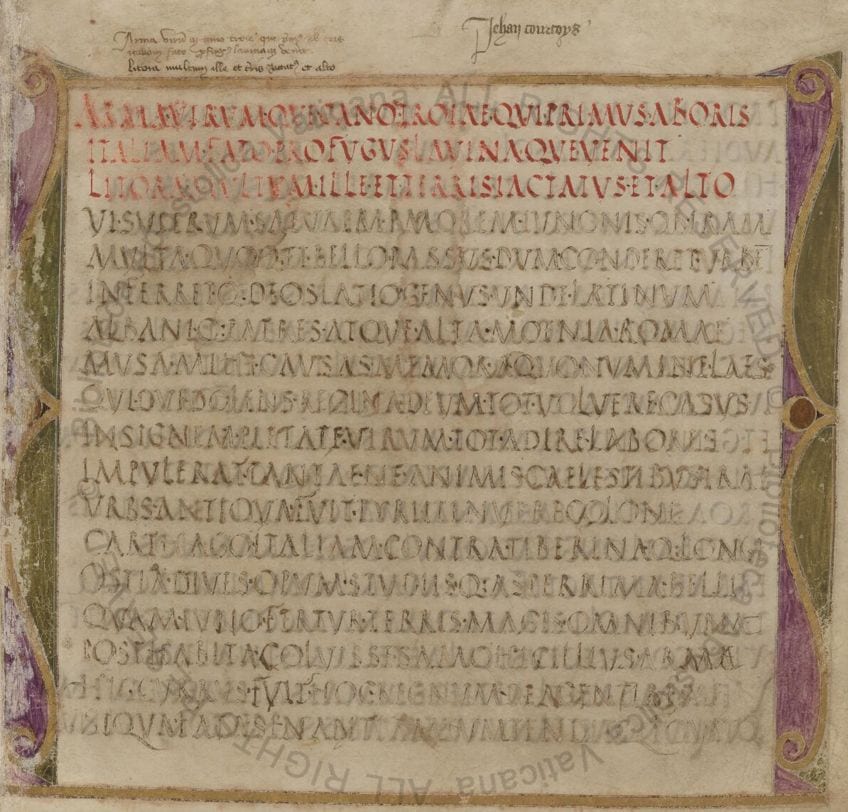 Medieval copy of a manuscript by the Ancient Roman poet Vergil (Folio 78r); Unknown sourceUnknown source, Public domain, via Wikimedia Commons
Medieval copy of a manuscript by the Ancient Roman poet Vergil (Folio 78r); Unknown sourceUnknown source, Public domain, via Wikimedia Commons
In China, calligraphy emerged during the Shang Dynasty (16th-11th century BCE) with the development of a seal script. This seal script evolved into other unique styles, including the clerical script, regular script, and cursive script. In Islamic societies, calligraphy rose in popularity as a medium to transcribe important texts such as the Qur’an.
Arabic calligraphy included a multitude of calligraphic styles, including Kufic, Naskh, and Thuluth, with master calligraphers like Ibn Muqla and Ibn al-Bawwab leaving a significant legacy for future generations to follow.
In Medieval times, European calligraphy was developed primarily for religious purposes and found in manuscripts created by monks. Prominent texts include the Carolingian script, which was written during the reign of Charlemagne, and played a large role in standardizing writing across European society. In East Asia, Japan adopted the calligraphic techniques of China and developed their own styles such as Kana and Kanji. Important figures include calligraphy such as Wang Xizhi in China and Wang Yangming in Japan, who refined the art form and left a profound impact on its legacy.
The 15th century saw calligraphy face many challenges with the invention of the printing press as a more practical means of communication. However, key calligraphers such as Johann Neudörffer and Edward Johnston paved the path for the development of Modern calligraphy styles.
By the 20th century, calligraphy as a traditional art form underwent a complete revival since many artists sought to reconnect with craftsmanship. Notable calligraphers include Donald Jackson, who led the creation of the St. John’s Bible, as well as Wang Dongling, who developed Contemporary Chinese calligraphy by adopting an expressive yet abstract approach. Today, the art form continues to thrive as an influential practice shaped by the rich history of lettering and traditional techniques.
Five Famous Calligraphy Styles
Now that you have an overview of the development of calligraphy and its history in the world as an art form, you can now explore some of the most popular calligraphy styles that have defined the art form and continue to inspire many aspiring calligraphers! Below, we will look at the major calligraphy styles, including a few interesting examples and characteristics of each style.
Chinese Calligraphy
The Chinese calligraphy style consists of the regular script and running script and places a strong emphasis on the elements of balance, harmony, and rhythm.
Chinese calligraphy includes a diverse range of styles such as clerical script, seal script, regular script, and cursive script.
A few key examples of Chinese calligraphy can be examined in the work of Wang Xizhi’s Lanting Xu (353 CE) and Zhao Menfu’s Preface to the Orchid Pavilion Collection (1964), both of which were executed in regular script. Examples of the running script style in Chinese calligraphy include Su Shi’s Red Cliff’s Ode (1082).
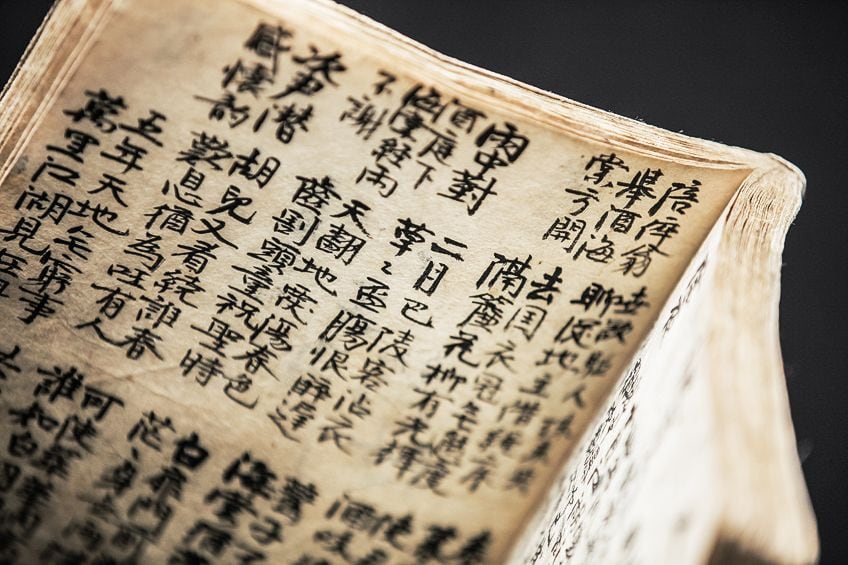
Arabic Calligraphy
Arabic calligraphy styles involve more intricate and geometric designs that incorporate elongated vertical strokes. Another primary characteristic of Arabic calligraphy is its emphasis on the flow of letters, which appear seamless.
A few famous Arabic calligraphy styles include the Kufic, Naskh, Thuluth, and Diwani styles.
Examples of the Kufic style can be seen in the script on the Dome of the Rock in Jerusalem and the Blue Qur’an (c. 9th-10th century) from Tunisia. The Mamluk Qur’an (c. 14th century) from Egypt and the Topkapi manuscript (c. 8th century) from Turkey are also examples of Arabic calligraphy written in the Naskh style.

Japanese Calligraphy
Japanese calligraphy is among the most elegant types of calligraphy, which is characterized by the use of simple brushstrokes and varied brush pressure.
Popular Japanese calligraphy styles include the block style Kaisho, the semi-cursive style Gyosho, and the cursive style Sosho.
A few well-known examples of Japanese calligraphy can be admired in the works of Emperor Saga with the Lotus Sutra and the Heart Sutra by Kukai, executed in the Kaisho style. Examples of Japanese calligraphy executed in the Gyosho style include The Analects of Confucius (479 BCE) and The Chronicles of Japan (720 CE) by Ouyang Xun.
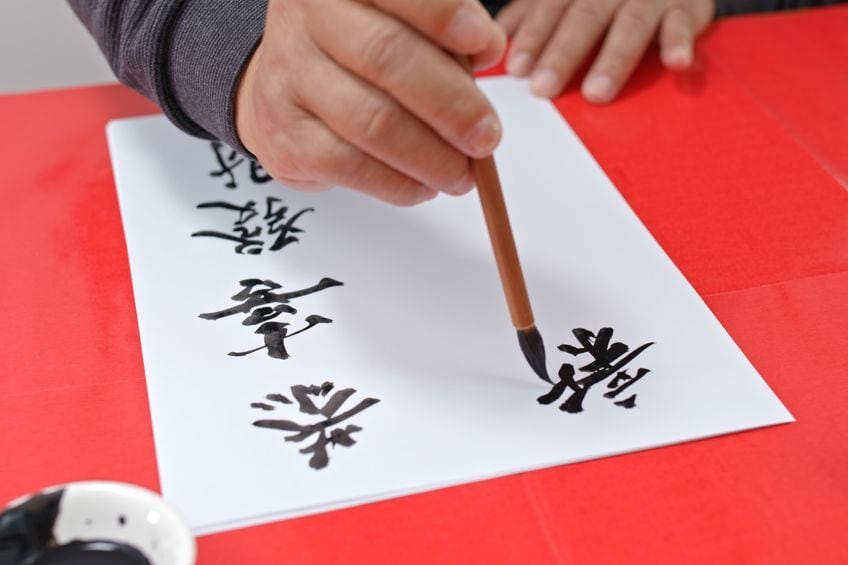
Western Calligraphy
This type of calligraphy is one of the most famous and is characterized by the use of different scripts such as Uncial, Gothic, Italic, and Copperplate.
The focus of Western calligraphy is placed on its legibility and letter forms, which encompass minor artistic nuances to form.
Famous examples of Western calligraphy include The Book of Kells (800 CE) and the Lindisfarne Gospels (c. 700 CE), which were written in the Uncial style, as well as texts by Giovanantonio Tagliente and Ludovico Vicentino degli Arrighi.
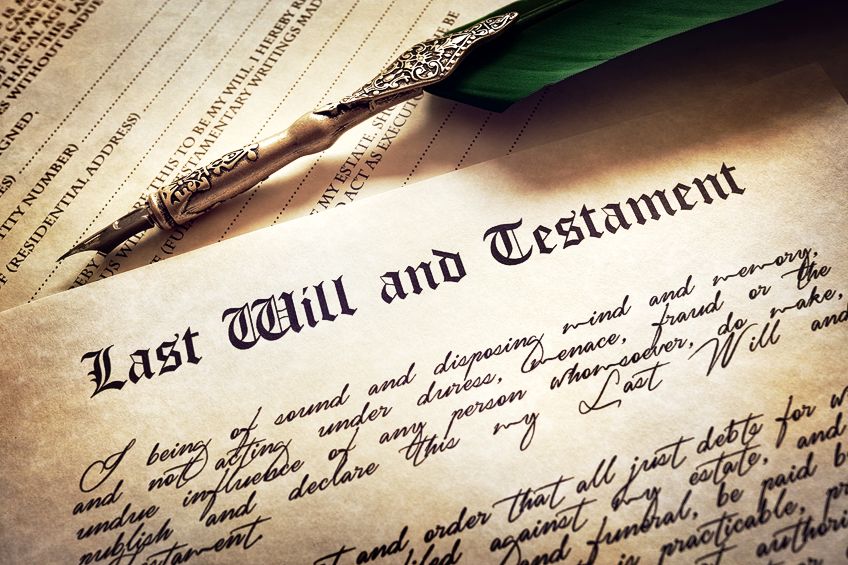
Persian and Islamic Calligraphy
The Islamic form of calligraphy also used in ancient Persia is characterized by the use of decorative elements and letters that intertwine.
The focus of this type of calligraphy was on poetic and spiritual expression, which were encompassed by styles such as the Nastaliq, Thuluth, and Diwani styles.
Prominent examples of these styles include the poetry of Hafez and the Book of Kings (c. 977-1010 CE) by Ferdowsi, which were written in the Nastaliq style, as well as the calligraphy found on the Alhambra palace in Spain and the Taj Mahal, scripted in the Thuluth style.
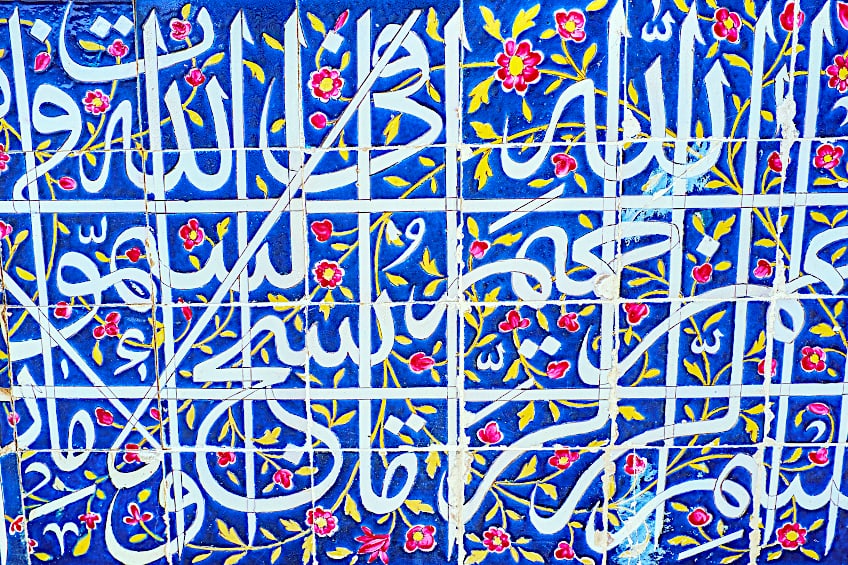
Tools and Materials Used in Calligraphy
Now that you have an understanding of the different styles of calligraphy and its complex background, you can now get an understanding of the materials and tools required to practice calligraphy. In doing so, you too can start to craft beautiful and expressive texts with the flick of a wrist. The following tools and materials are a basic guide to help you kickstart your passion for calligraphy.
- Calligraphy pens: While these specialized pens were not available to previous civilizations, today, we have access to a variety of pens manufactured and designed for artists to practice calligraphy. These include fountain pens and dip pens, the latter of which has a removable nib that can be dipped in ink. Fountain pens are also excellent for calligraphy since they employ internal reservoirs to feed the ink at intervals into the nib. One can adjust the thickness of lines by adjusting the angle and pressure used on the pen. Nibs refer to the metal tips of dip pens that can be found in a variety of shapes and sizes, such that one can create distinct lines and enable calligraphers to invent their own styles.
- Calligraphy ink: One of the most important materials to the art of calligraphy is the ink itself, which ideally should be high quality for a smoother and more consistent result. Calligraphy inks come in a variety of colors and can be waterproof or archival for longer-lasting artwork.
- Paper: Calligraphy is often practiced on specific types of paper and can range from Bristol board to cotton paper and vellum. These types of papers are smooth and prevent ink bleeds. It is important to note that the texture of the paper largely influences the final appearance of the work. Blotting paper or cloth can be used to prevent smudging and absorb excess ink.
- T-Squares and rulers: By using a ruler or a T-square, one can ensure proper alignment and consistency across their work while making sure that the text is well organized and clear.
- Calligraphy brushes: Brushes have been used for centuries by calligraphy to create expressive and unique texts. Brushes with flexible and soft bristles make for excellent calligraphy brushes since the artist can manipulate the brush to create different stroke styles and control the width of the lines.
- Water-based paints: Calligraphers also use water-based paints such as watercolor and gouache to add accents of color to their calligraphy backgrounds and write on darker surfaces.

Calligraphy for Beginners
When learning the art of calligraphy, it is important to recognize that the art form takes patience and lots of practice. To dedicate oneself to learning calligraphy, one needs to follow these simple guidelines that will provide you with important tips on how to go about learning calligraphy and what to avoid. By reviewing this list, you can be sure that you are on the right track!
- Begin with the basic materials or a simple calligraphy set, which should include a dip pen, a set of nibs, and a bottle of ink. By starting with simple tools, you can gradually build up to more complex materials.
- Be sure to practice calligraphy regularly to improve your skills. Remember that calligraphy is not an art learned overnight. Set aside a few minutes every day to practice your brush strokes and by the end of a few weeks, you can be a lot more confident than when you began.
- Pay attention to the foundational techniques such as basic letter forms and strokes before moving on to complex styles. Try to maintain consistent pressure and angle when writing.
- Create your own guidelines of use lined paper to achieve uniform letter spacing and sizing, and ensure consistency.
- Analyze the different calligraphy styles to gain a better understanding of each style’s unique characteristics. It is always useful to study the works of established calligraphers for inspiration.
- Play with different nibs and inks to find your preference and develop your style.
- Embrace the online calligraphy community. There are many calligraphy forums and social media groups to join, where you can connect with other calligraphers and receive advice from.

In the process of learning calligraphy, there are also a few things to avoid so that you do not get overwhelmed. Below is a list of what to avoid when it comes to developing your skills in calligraphy. Remember that patience is key above all!
- When starting, it is advised that one avoids the use of poor-quality materials or cheap products since they can lead to more frustration and hinder progress.
- Do not rush the foundations of calligraphy and jump into the complex styles. It is advised that you take your time learning and perfecting the basic styles and letter forms, even if you are excited.
- Avoid using the wrong ink, especially if you are working with a nib that requires a specific ink. If you use the wrong ink, you could risk flow issues in the pen and damage the nib.
- It is always recommended that you do not attempt to learn multiple styles at the same time. While you may be eager, you also risk overwhelming yourself with complex styles.
- Avoid comparing your work to that of professionals who have been practicing for years. Each step is unique to your learning experience and it is key to remind yourself that everyone begins somewhere, and expands at their own pace.
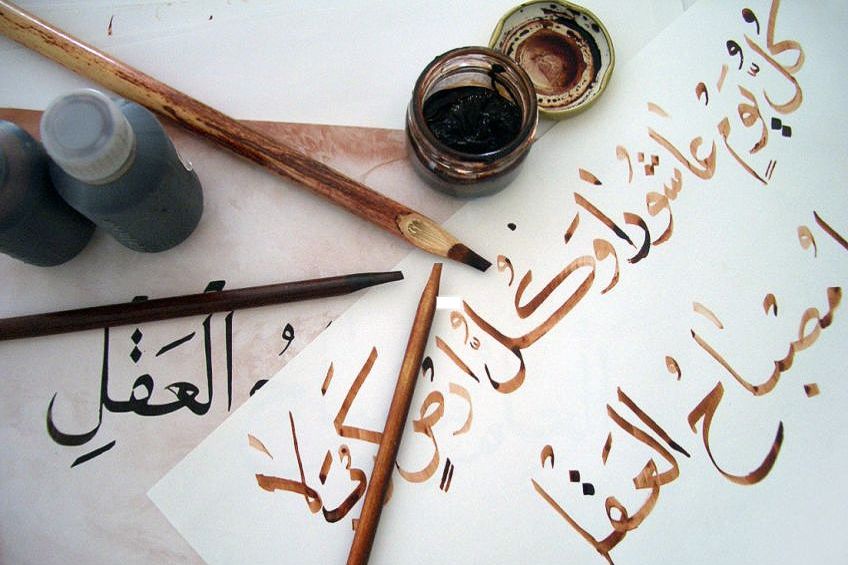 Calligraphy student work, tracing the guidelines set down by the Master calligrapher; Aieman Khimji, CC BY 2.0, via Wikimedia Commons
Calligraphy student work, tracing the guidelines set down by the Master calligrapher; Aieman Khimji, CC BY 2.0, via Wikimedia Commons
Understanding the Applications of Calligraphy
How is calligraphy used as an art form, and what is calligraphy used for in everyday life? Now that you have a holistic idea of the art of calligraphy and the various do’s and don’ts when learning the art form, we can now identify the different uses of calligraphy in everyday life, art, and design.
Calligraphy in Art and Design
Today, the fields of art and design are incomplete without calligraphy. Calligraphy is considered to be an important part of lettering design and typography. Many lettering artists and calligraphers create bespoke fonts and typefaces for use in various print media, including books, logos, advertisements, and other design projects. Calligraphy that is hand drawn is combined with designs to produce unique and artistic designs in typography.
Apart from typography and lettering, calligraphy is also used to create visually captivating artworks that focus on movement and form.
In art history, calligraphy was used to create illuminated manuscripts. Today, calligraphy is still used to embellish important documents for creative purposes. In graphic design, calligraphy is used to design unique posters and packaging that fuses traditional styles with modern designs.

Among the many uses of calligraphy in art and design is its place in wedding card invitations and event signage, which is used to romanticize the atmosphere of celebratory events and add a personal touch. In graffiti and street murals, calligraphy is also found in tags and texts around urban environments, which started to gain popularity in the 1980s.
With advancements in digital art and social media, calligraphy has also been incorporated into digital brushes and tools to help creatives adapt to the changing technological climate of the art world.
Calligraphy in Everyday Life
What is calligraphy used for in everyday life? In the 21st century, calligraphy envelops almost all major aspects of life, from letters to event cards and menus in a restaurant. Calligraphy is used to create a variety of designs for different social purposes, including branding and advertising using digital and graphic design tools. Calligraphy is also adopted by many as a form of relaxation and mindfulness that enhances the human mind and makes for a healing practice.
Calligraphy is thus an enriching art form that extends beyond the visual arts and into the realms of media, design, and the digital world to appeal to the human senses of aesthetic lettering.
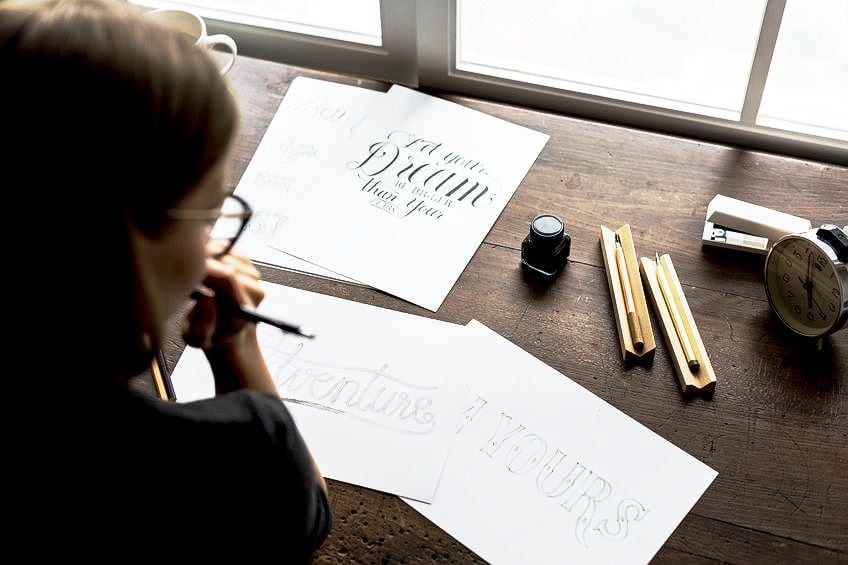
Calligraphy is a timeless art form that has captivated artists and writers for centuries across the world. Through a complex balance of aesthetics and technical skill, calligraphy illustrates both beauty and meaning in the form of text. From 3000 BCE until today, calligraphy has evolved and adapted to the growing digital age that will continue to shape the future of visual art.
Frequently Asked Questions
What Is Calligraphy?
The art of calligraphy involves the practice of creating stylized lettering or elegant handwriting for artistic or decorative purposes. Calligraphy emphasizes beauty and line, and encompasses a variety of calligraphic styles derived from different cultures around the world.
How Is Calligraphy Used as an Art Form?
The purpose of calligraphy in visual art is to create more visually pleasing texts that focus on the aesthetics of lettering rather than their communicative value. In art, calligraphy has been used to decorate and embellish documents that held significant value in different cultures. Calligraphy has since evolved to encompass functional uses across advertising and print media.
Is Calligraphy a Dying Art Form?
Calligraphy is still widely practiced among many artists who continue to employ traditional techniques and materials to evoke themes of spirituality and ornamentation. Calligraphy also holds cultural significance in many cultures and despite the advancements in technology, calligraphy remains a significant art form.
Larissa Meyer is a 32-year-old mother from Michigan and creative spirit since childhood. Her passion for painting and drawing has led her to an education as an illustrator and a career as a freelance graphic designer. She has a Bachelor of Fine Arts in Illustration and a degree in Graphic Design. Larissa is a talented artist who is able to master a wide range of styles and techniques to bring her artistic vision to life. Her greatest passion is currently fluid painting and epoxy resin art. Larissa’s love for art and her knowledge and experience in illustration make her the perfect Creative Director for our fluid-painting.com team. She is the creative head of our team and shares her passion and knowledge with our community through articles and tutorials.
As a mother of a 2-year-old daughter, Larissa also understands the importance of fostering creativity in early childhood. She uses her experience and knowledge to help other parents inspire their children and develop their artistic skills as well.
Learn more about Larissa Meyer and about us.



